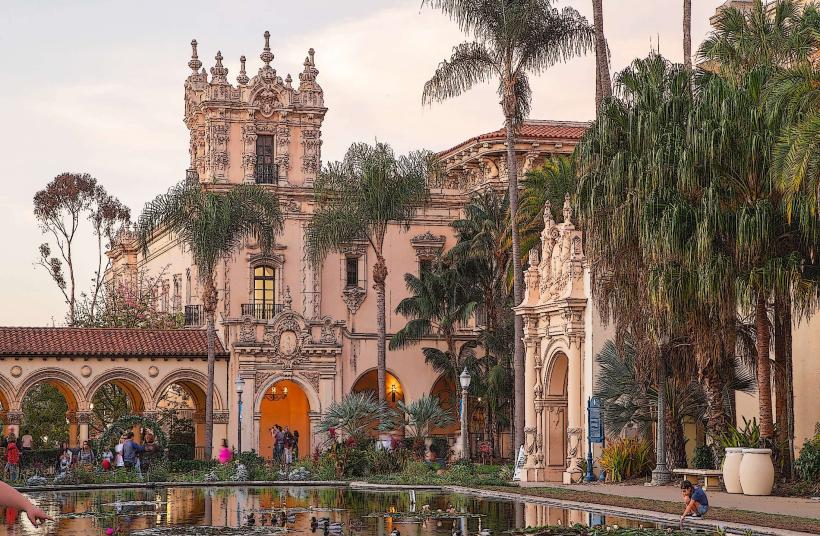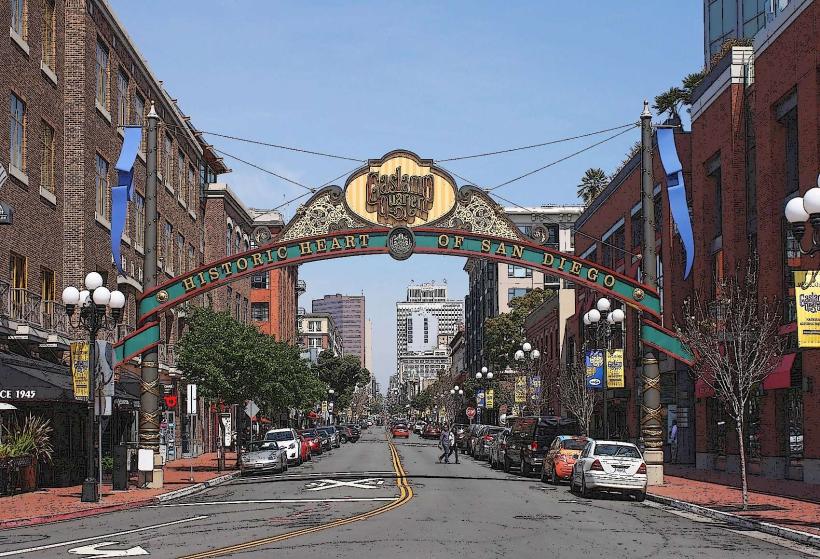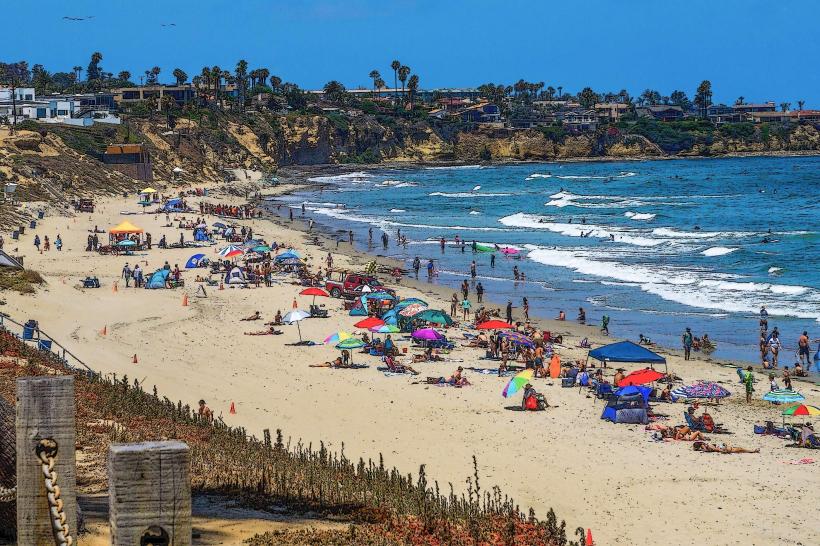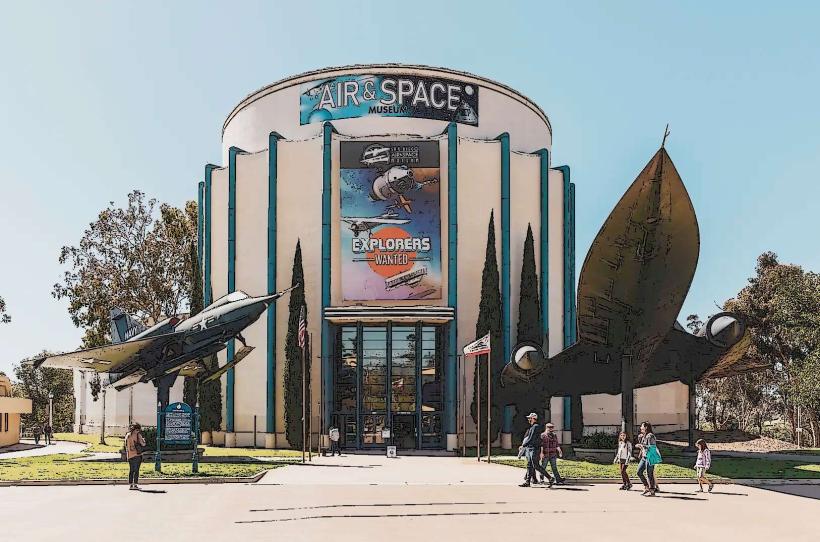Information
Landmark: Tijuana River National Estuarine Research ReserveCity: San Diego
Country: USA California
Continent: North America
Tijuana River National Estuarine Research Reserve, San Diego, USA California, North America
Tijuana River National Estuarine Research Reserve: Detailed Overview
The Tijuana River National Estuarine Research Reserve (TRNERR) is an important and ecologically rich coastal wetland located in Imperial Beach, California, at the southern edge of the United States, bordering Mexico. The reserve, covering approximately 2,293 acres, is renowned for its diverse ecosystems and its role as one of the last intact estuaries in southern California.
1. Ecological Significance
The Tijuana River Estuary is an essential ecological area for both the United States and Mexico. The reserve encompasses a variety of habitats, including salt marshes, mudflats, riparian zones, coastal sage scrub, and dunes. These habitats support a wide range of wildlife, including some of the most endangered species in California.
Key Features:
Diverse Ecosystems: The estuary is home to wetlands, uplands, and coastal environments, providing important habitats for native plants, migratory birds, and marine life.
Wetland of International Importance: The Tijuana River Estuary is recognized as a Ramsar Wetland of International Importance, reflecting its global ecological value.
Bird Sanctuary: The reserve is a critical stop on the Pacific Flyway, with over 370 bird species observed, including the endangered Ridgway’s rail, light-footed clapper rail, and the California least tern.
Marine Life: The reserve's waters support various species of fish, invertebrates, and marine mammals that rely on this environment for feeding, breeding, and migration.
2. Research and Monitoring
TRNERR plays a key role in the long-term monitoring and research of estuarine and coastal ecosystems. It operates as part of the NOAA National Estuarine Research Reserve System. The research conducted here helps inform the management of coastal resources and supports efforts in habitat restoration, climate change adaptation, and species protection.
Key Research Areas:
Water Quality: Scientists monitor water parameters such as salinity, temperature, turbidity, and nutrient levels.
Biodiversity: Long-term studies track the diversity of plants, animals, and microbial communities in the estuarine system.
Habitat Restoration: The reserve conducts restoration projects to improve wetland areas that have been degraded due to urban development or pollution.
3. Education and Outreach
The Tijuana River National Estuarine Research Reserve is committed to providing educational opportunities to the public, offering programs that help visitors understand the ecological importance of the reserve.
Visitor Center:
The Visitor Center, open Wednesday to Sunday, offers exhibits on local ecosystems, conservation efforts, and the wildlife of the estuary. Interactive displays, educational videos, and information on the history of the reserve make the center an excellent resource for visitors of all ages.
The center also serves as a base for educational programs, including guided walks, nature tours, and Junior Ranger activities for children.
Public Programs:
The reserve regularly offers guided nature walks, where knowledgeable naturalists lead visitors through various parts of the reserve, providing in-depth explanations of the plants, animals, and ecological processes that sustain the estuary.
Bird Watching Tours: Birding enthusiasts can join guided tours to explore the reserve’s excellent bird-watching spots, especially during migration seasons.
Special Events: The reserve hosts seasonal events, including habitat restoration workdays and volunteer opportunities, where the public can help with ongoing environmental projects.
4. Trails and Recreation
The Tijuana River National Estuarine Research Reserve is equipped with several trails that wind through different habitats, providing opportunities for hiking, bird watching, and nature exploration. These trails are open daily from dawn to dusk.
Popular Trails:
McCoy Trails: These trails, which include both North and South McCoy routes, offer access to the estuary’s most picturesque areas, including bird-watching hotspots and scenic views of the Tijuana River as it meets the Pacific Ocean.
Salt Marsh Trail: This trail offers visitors the opportunity to walk through marshland areas, providing the chance to see wading birds and other wildlife in their natural habitat.
Border Field State Park:
Located within the reserve, Border Field State Park offers additional recreational opportunities, such as surf fishing, beachcombing, horseback riding, and picnicking. The park features restrooms, picnic tables, and interpretive displays, making it a great spot to enjoy the coastal environment.
Kayaking and Canoeing:
The Tijuana River estuary is an excellent location for kayaking and canoeing. Visitors can explore the water channels and observe the estuary from a unique perspective, seeing wildlife up close.
5. Conservation Efforts
Tijuana River National Estuarine Research Reserve is at the forefront of several conservation and habitat restoration projects aimed at preserving its unique ecosystems.
Key Conservation Projects:
Habitat Restoration: The reserve has led efforts to restore degraded salt marsh and riparian areas, working to re-establish native plant communities and improve habitat for endangered species.
ResiDUOS Project: This collaborative initiative addresses issues of marine debris in the U.S.–Mexico border region, working to improve resilience to environmental stressors by removing debris and promoting waste reduction practices.
Invasive Species Management: Efforts are underway to remove invasive plant species, such as Arundo donax, and restore native flora that supports local wildlife.
Endangered Species Protection:
The reserve plays a crucial role in the protection and monitoring of endangered species such as the California least tern and the light-footed clapper rail. It also works to restore habitat for Ridgway’s rail, a bird that relies on the estuarine wetlands for breeding and foraging.
6. Visitor Information
Location:
The Tijuana River National Estuarine Research Reserve is located approximately 15 miles south of downtown San Diego, in the Imperial Beach area, near the U.S.–Mexico border.
Hours of Operation:
The Visitor Center is open Wednesday through Sunday from 10:00 AM to 5:00 PM.
Trails:
Trails are accessible daily from dawn to dusk.
Admission:
Entry to the reserve and trails is free of charge.
Parking:
There is parking available at the Visitor Center and Border Field State Park. Additional parking is available in surrounding areas.
Public Transportation:
The reserve is accessible by public transportation, with nearby bus routes #933 and #944 and access to the Blue Line Trolley.
Conclusion
The Tijuana River National Estuarine Research Reserve is a remarkable coastal wetland that plays a vital role in the ecological health of southern California’s coast. It provides sanctuary to endangered species, supports diverse ecosystems, and offers a variety of recreational opportunities for visitors. Whether you're interested in environmental conservation, bird watching, hiking, or simply enjoying nature, the reserve is an essential destination for anyone looking to connect with the natural beauty of the U.S.–Mexico border region.

























